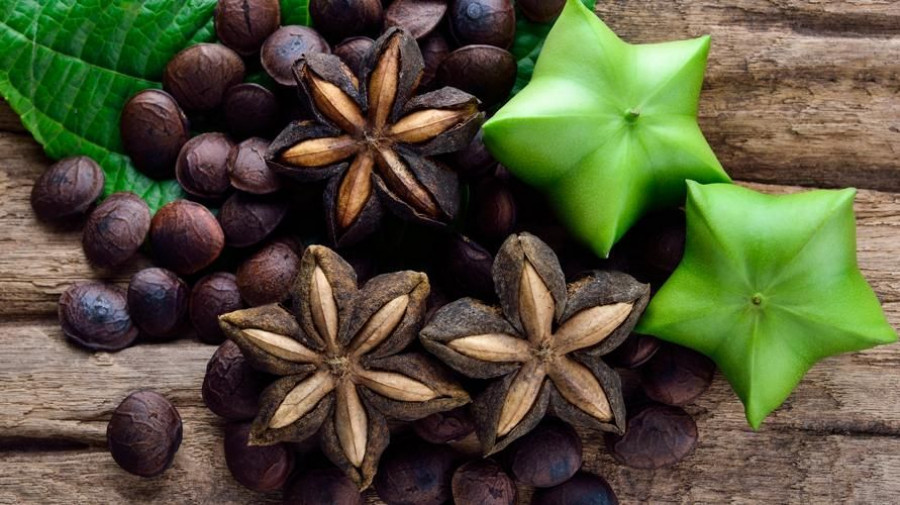Sacha inchi nut (Plukenetia volubilis) originating from the tropical forest of Amazon is also known as Inca nut or mountain nut. With the vast spreading, Sacha inchi nut is also planted in China, Vietnam, Malaysia, Thailand and just recently in Indonesia. Morphologically, the Sacha inchi fruit is of a star shape. In each star, there are 4 - 5 nuts. The unripe Sacha inchi fruit is green, while the ripe one is blackish brown.
Sacha inchi is rich with omega 3 (47-51%), omega 6 (34-37%) and omega 9 (6-10%) fatty acids providing many health benefits for children and adults. Leaves of the Sacha inchi plant is rich in antioxidant and can be used as an ingredient for a dish or processed as tea leaves. Economically, one liter of Sacha inchi nut oil is worth millions of rupiahs. The oil is an ingredient for cosmetics, especially for keeping the skin humidity and brightness. The Sacha inchi oil is also beneficial in lowering cholesterol and uric acid, reducing the risks of swelling heart and stroke, tumor activities, knee-joint inflammation, cataracts and tingling, as well as increasing sight and intelligence.
Dr Supriyanto, a scientist of SEAMEO BIOTROP, explains various benefits and development potentials of Sacha inchi nut in a Talk of Affiliate Scientist webinar series with the theme “The Prospect of Developing Sacha Inchi Nut Cultivation in Indonesia”, held on 12 April 2022 with Dr Rhomi Ardiansyah, the Head of Ecosystem Restoration and Conservation Section of SEAMEO BIOTROP as the moderator. Dr Supriyanto shares that Sacha inchi nut should be intensively cultivated by implementing three phases. The first phase is the seed selection phase. Seeds should be of superior quality both genetically and physically. The second phase is preparing the surrounding environment for cultivation, including planting patterns, planting holes, fertilizers, types of soils and pollinators. The third phase is controlling pests and diseases for reducing losses. “The optimal growth of Sacha inchi nut plant can be achieved after fully implementing the three phases”, Dr Supriyanto stated.
The Director of SEAMEO BIOTROP, Dr Zulhamsyah Imran, shared that the study result of Sacha inchi oil in SEAMEO BIOTROP indicated that the oil is beneficial in lowering cholesterol. However, this result should be supported by quantitative clinical tests, literature studies and visibility review to make sure that the Sacha inchi cultivation will not threaten the Indonesian biodiversity by becoming invasive species.
“The Sacha inchi nut is economically potential to be developed in Indonesia, especially due to its health benefits. However, in order to increase productivity and to keep the high quality of Sacha inchi oil, we need to implement intensive cultivation and derivative products development of Sacha inchi”, Dr Zulhamsyah concluded. (hcn/sis).
 Wednesday, 20 April 2022 on 11:59am
Wednesday, 20 April 2022 on 11:59am
